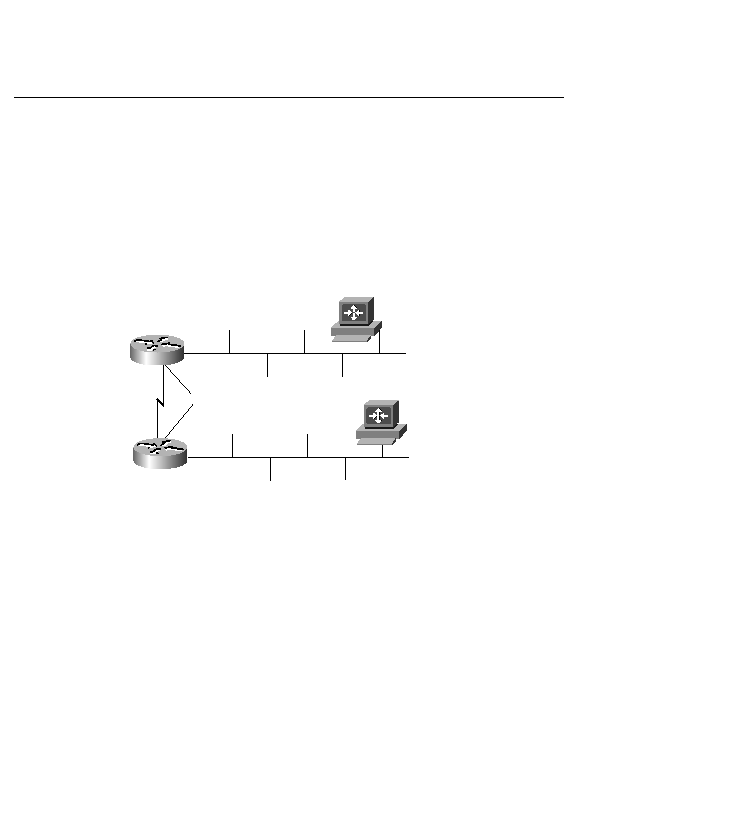
serial link or point-to-point subinterface, IP unnumbered lets you borrow the address of a LAN
interface to use as a source address for routing updates and packets from that interface. In
Figure 11-7, a ping is sent from Host Nick to Host Erik. On Cisco Router A, every IP network
interface not residing on a common "wire" must belong to a unique subnet. Based on network
information contained in the IP routing table on Router A, the network 1.1.1.0 is not directly
attached to Router A. It can be reached by forwarding a packet to a next-hop address obtained
from the IP routing table--in this case, 1.1.1.1.
destination network is on an interface directly attached to the destination Router B, the packet
can simply be delivered to the end host Erik.
Normally Router B would use the source address of the routing update as the next hop, because
it is directly connected to the router sending the update. In this case, Router A has borrowed
2.2.2.1 as its address for the source update. Instead of simply entering a next-hop address based
on the source address of the update, Router B enters the IP routes learned on the IP unnumbered
interface into the routing table as interface routes:
SH IP ROUTE
Network 2.2.2.0 learned via Interface S0
update. Because of this, IP unnumbered only makes sense for point-to-point links. The
attraction is saving subnet addresses.